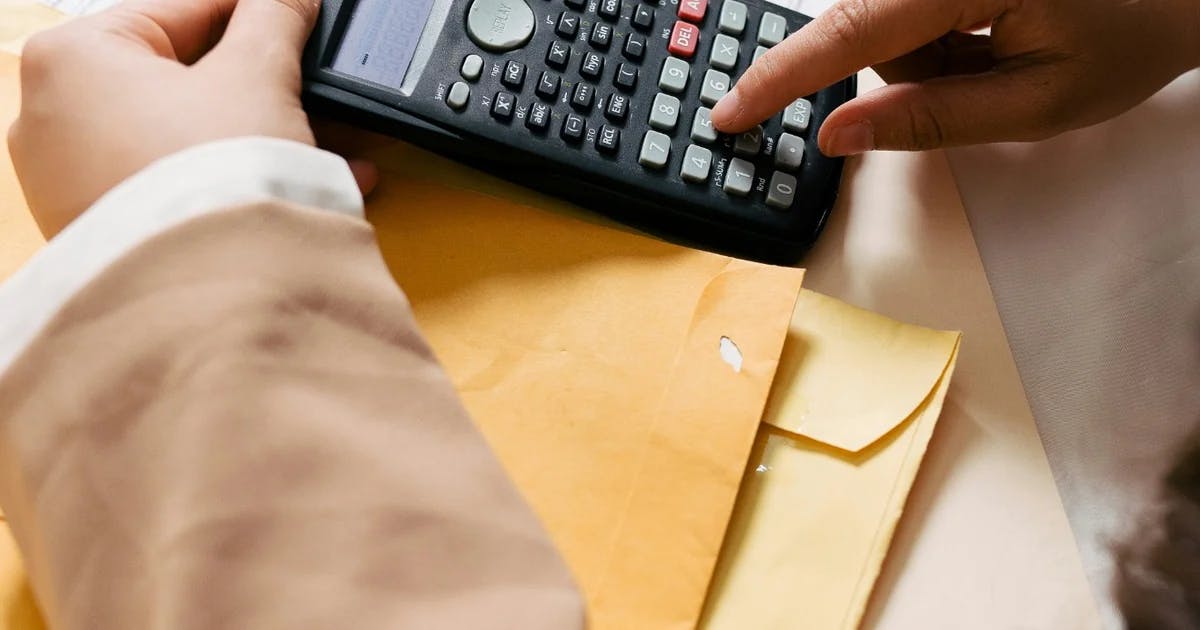
VAT Calculation Ireland: How to Calculate VAT at the Various Rates

Summary
A clear, practical guide to calculating Irish VAT with formulas, worked examples, mixed-rate invoices, and key compliance tips.
Calculating Irish VAT isn’t just “add 23%.” The right steps depend on the rate, tax point, invoicing rules, cross-border flows, and whether you must self-account for VAT on purchases. This guide walks you through the lot - with worked examples and links to the underlying rules.
1) Start with the rate
Ireland’s current rates (effective 1 January 2025) are: standard 23%, reduced 13.5%, second-reduced 9%, livestock 4.8%, and the flat-rate addition for unregistered farmers 5.1%.
You can search the Revenue VAT rate database to find the VAT rate for your specific good/service
Note: most hospitality items moved back to 13.5% on 1 September 2023; Government has announced a change to 9% from 1 July 2026 (subject to legislation).
Tip: If you sell to consumers in Ireland, your displayed prices must be tax-inclusive. Trade-only B2B listings may show ex-VAT.
2) Identify the tax point & invoicing rules
- Tax point / due date: VAT becomes payable based on the normal rules; most businesses file and pay by the 19th day after the period end (ROS e-filing).
- Advance payments: if you receive deposits/part-payments before completion, you must issue a VAT invoice by the 15th of the month following the payment.
- What an invoice must show (key items): date, sequential number, supplier/customer details, rate, amount of VAT, and required reverse-charge notes where applicable.
- Foreign-currency invoices/credit notes: you must also show the euro figures using the prescribed exchange rate.
3) Calculate VAT - the core formulas
- Net → VAT → Gross
VAT = Net × rate. Gross = Net + VAT
Example (@23%): Net €1,000 → VAT €230 → Gross €1,230. - Extract VAT from a VAT-inclusive price
VAT = Gross × rate ÷ (1 + rate).
Example (@13.5%): Gross €1,135 → VAT = 1,135 × 0.135/1.135 ≈ €135.
4) Fill your VAT3 correctly
- T1 = VAT on sales plus VAT you must self-account (reverse-charge/ICAs/imports).
- T2 = VAT on purchases you can reclaim.
- T3/T4 = net payable/repayable (difference between T1 and T2).
If you use Postponed Accounting on imports, include the import VAT in both T1 and T2 (subject to normal deductibility).
5) Don’t forget reverse charge & cross-border rules
- Intra-EU acquisitions of goods (ICAs): you self-account in Ireland (T1) and often reclaim (T2) in the same return.
- Services from abroad (B2B): many are taxable where received - you reverse-charge in Ireland.
- Construction domestic reverse charge: principal contractors often account for VAT instead of the subcontractor (and RCT interaction applies).
- VIES checks for zero-rated intra-EU supplies: use the EU VIES tool.
6) Input VAT recovery, partial exemption & annual adjustments
- You may only reclaim input VAT to the extent costs relate to taxable activities (zero-rated counts as taxable). Mixed (taxable/exempt/non-business) activities require a fair apportionment and an annual adjustment.
- Capital Goods Scheme (property): reclaim is trued-up over the VAT-life of the asset (generally 20 years for new builds, 10 for refurbishments).
7) Credit notes, discounts & bad debts
- Issue VAT credit notes promptly (within 15 days after month-end of the original supply) when price changes or a rate error occurs; show the rate that applied on the original invoice.
- Bad debt relief is available if you accounted for VAT (invoice basis) and the debt is written off after reasonable recovery steps; not available on cash-receipts basis.
8) Special schemes that change the calculation
- Margin Scheme (second-hand goods): VAT is charged only on your margin, not the full selling price.
- Travel Agents’ Margin Scheme (TAMS): VAT on the margin for EU travel packages; special deductibility rules apply.
- OSS/IOSS for B2C EU e-commerce: report multi-country VAT in a single return (Union/Non-Union OSS; IOSS for low-value imports).
9) Cash (moneys-received) basis — can you use it?
You may opt into the cash receipts basis if your annual turnover is under €2 million or at least 90% of supplies are to unregistered persons (e.g., retail). On cash basis you pay VAT when paid - and you cannot claim bad debt relief (because VAT wasn’t paid yet).
10) Record-keeping & penalties
Keep full and true VAT records (invoices, books, linking documents) for six years.
Penalties for non-compliance can be significant (e.g., fixed penalties for incorrect/late returns).
Worked examples
A) Domestic service at 13.5% (B2C)
Net €2,000 → VAT €270 → Gross €2,270.
VAT3: T1 +€270. If €100 input VAT this period, T2 +€100 → T3 payable €170.
B) Equipment bought from Germany (ICA) @23% with full recovery
Invoice €5,000 (no VAT). You self-account: T1 +€1,150 and (with full deductibility) T2 +€1,150 → no net cash effect.
C) Import using Postponed Accounting (PA)
Customs value €10,000; rate 23%. VAT3 shows PA1 value; T1 +€2,300 and (if deductible) T2 +€2,300.
Quick checklists
Before you invoice
- Correct VAT rate? (watch the 9% items and hospitality timelines)
- Right tax point (deposit vs. completion)?
- Need reverse-charge wording?
- Foreign currency? Add euro totals using the required rate.
When you buy
- From the EU? Record ICA self-accounting.
- From outside the EU? Consider Postponed Accounting.
- Mixed activities? Track partial-exemption and CGS impacts.
This is an estimate of the position based on the information inputted. All figures rounded to the nearest Euro. Other factors can also influence an individual’s tax position, it is recommended that personal tax advice be sought. The impact of some budget changes are not relevant to the tax position. No responsibility is taken by Irish Tax Hub for any loss, however occasioned, to any person by reliance on this calculator.
Found this article helpful? Share it with others
Related Posts

Local Property Tax (LPT) in Ireland

A clear guide to how Local Property Tax (LPT) in Ireland is calculated.

Tax Reliefs Every Irish Landlord Should Know in 2025

Irish landlords in 2025 can cut their tax bills significantly by claiming reliefs such as mortgage interest and repairs.